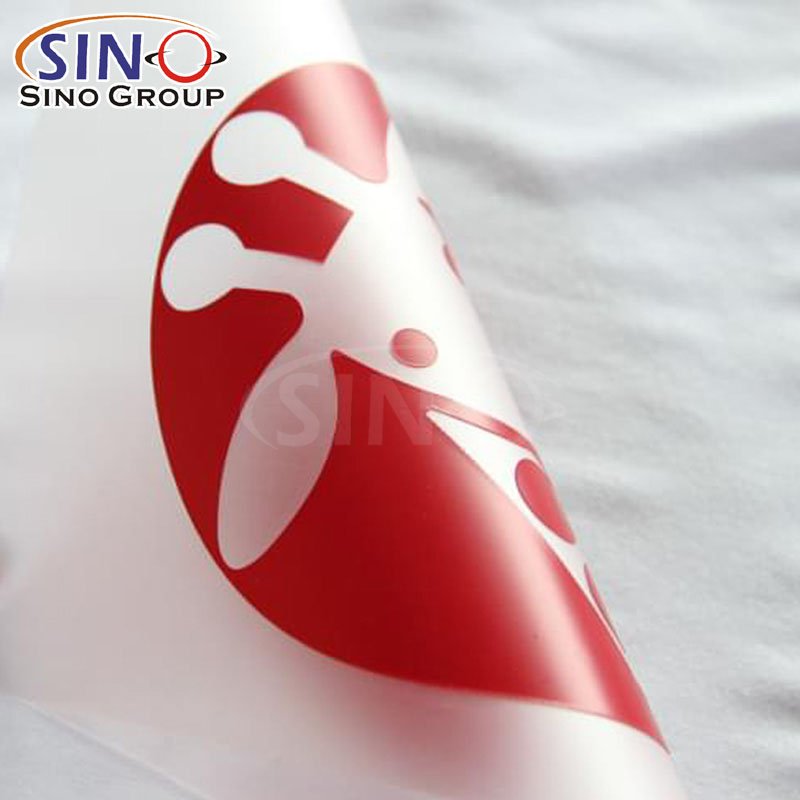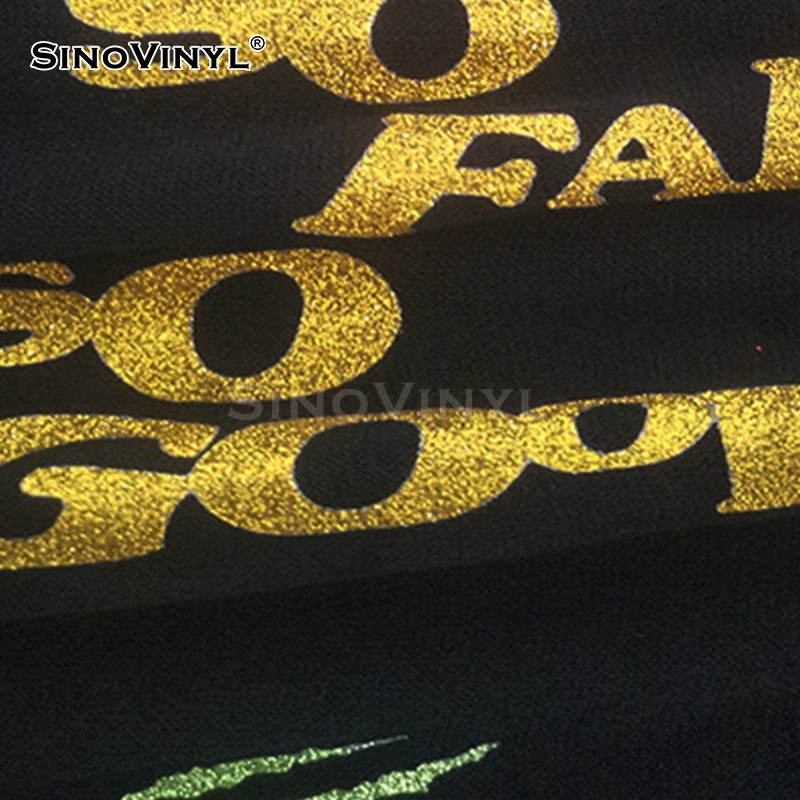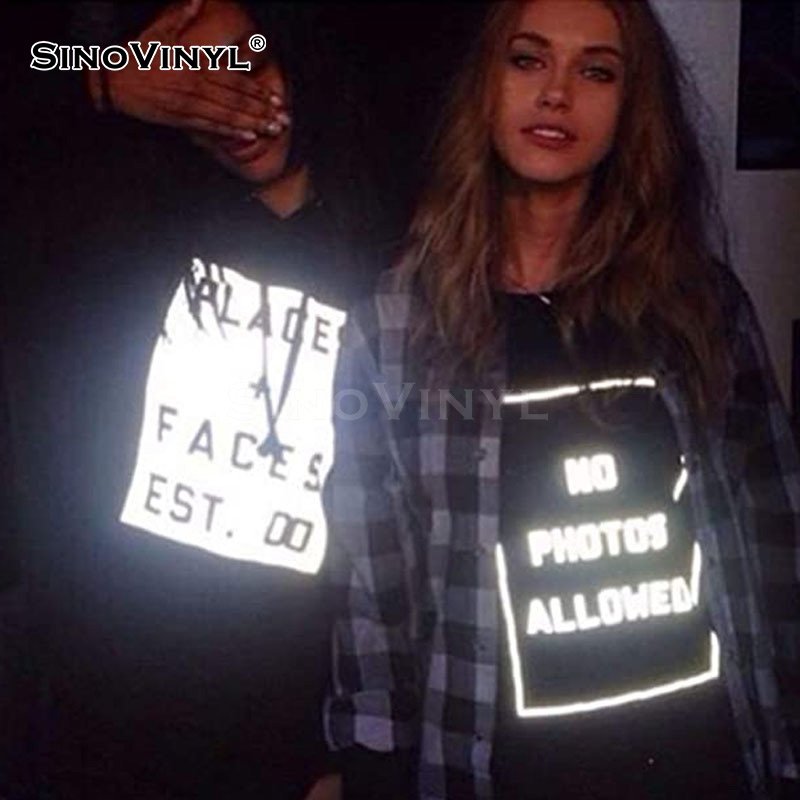Types of Heat Transfer Vinyl
1. Standard Vinyl
– Description: This is the basic and most commonly used type of HTV.
– Best For: Standard vinyl is versatile and works well for a variety of designs and projects.
2. Glitter Vinyl
– Description: Glitter HTV has a sparkly, textured surface that adds a fun and eye-catching element to designs.
– Best For: Ideal for designs that require a touch of glam or for projects targeting a youthful audience.
3. Metallic Vinyl
– Description: Metallic HTV has a shiny, reflective surface that mimics the look of metal.
– Best For: Great for creating designs with a metallic or futuristic aesthetic, or for projects that require a touch of luxury.
4. Foil Vinyl
– Description: Foil HTV has a smooth, reflective surface that gives a brilliant, mirror-like finish.
– Best For: Excellent for creating designs with a high-shine, reflective surface, adding a premium touch to apparel.
5. Patterned Vinyl
– Description: Patterned HTV comes in a variety of pre-designed patterns, such as florals, animal prints, camo, and more.
– Best For: Ideal for creating detailed and visually interesting designs without the need for complex layering.
6. Holographic Vinyl
– Description: Holographic HTV has a prismatic, multi-dimensional effect that reflects light in a rainbow of colors.
– Best For: Perfect for creating designs that demand attention and have a futuristic or cosmic theme.
7. Glow-in-the-Dark Vinyl
– Description: This specialty vinyl glows in the dark after exposure to light.
– Best For: Great for novelty or safety-related designs, especially for events or apparel worn in low-light environments.
8. Flock Vinyl
– Description: Flock HTV has a soft, velvety texture that resembles suede or felt.
– Best For: Ideal for creating designs that require a raised or textured finish, such as sports logos or vintage-style graphics.




Choosing the Right Vinyl for Your Project
Selecting the right type of vinyl for your project is crucial for achieving a successful and durable result. Here are some tips to help you choose the best vinyl based on the fabric and design:
1. Consider the Fabric Type
– Different vinyl types adhere differently to various fabrics. For example, smooth fabrics like cotton and polyester work well with standard vinyl, while stretchy or textured fabrics may require special types like stretch or flock vinyl.
2. Evaluate the Fabric Color
– If the fabric is dark or has a pattern, consider using a thicker or more opaque vinyl like glitter or metallic to ensure the design stands out.
3. Check the Stretch and Flexibility of the Fabric
– If the fabric is stretchy or will be subject to a lot of movement (e.g., sportswear), opt for a stretch vinyl that can move with the fabric without cracking or peeling.
4. Consider the Desired Finish
– Different vinyl types offer various finishes, such as matte, glossy, glitter, metallic, and more. Choose a finish that complements the overall look you want to achieve.
5. Think About the Complexity of the Design
– Intricate designs may benefit from thinner, more detailed vinyl options like fine point or printable vinyl. Simpler designs can use standard vinyl.
6. Look at Washability and Durability
– Consider how often the garment will be washed and if it will be exposed to harsh conditions. Choose a vinyl type known for its durability and ability to withstand repeated washings.
7. Check if Layering is Required
– If your design involves multiple layers of vinyl, ensure the chosen vinyl type is suitable for layering without creating bulk or compromising adhesion.
8. Consider Special Effects or Textures
– Certain vinyl types offer special effects like holographic, glitter, or flock finishes. These can add a unique and eye-catching dimension to your design.
9. Think About Application Method
– Different vinyl types may require different temperature settings and pressure levels on a heat press. Make sure you have the appropriate equipment and settings for your chosen vinyl.
10. Test on a Scrap Fabric
– Before applying the vinyl to your actual project, do a test on a small piece of similar fabric to ensure the vinyl adheres well and looks as expected.
11. Read Manufacturer Recommendations
– Always follow the manufacturer’s guidelines and recommendations for each specific type of vinyl.
By considering these tips, you’ll be better equipped to select the right type of vinyl for your specific project, ensuring a professional and long-lasting result.














